- Home
- Alison Weir
Elizabeth of York: A Tudor Queen and Her World
Elizabeth of York: A Tudor Queen and Her World Read online
Copyright © 2013 by Alison Weir
All rights reserved.
Published in the United States by Ballantine Books, an imprint of The Random House Publishing Group, a division of Random House LLC, a Penguin Random House Company, LLC, New York.
BALLANTINE and the HOUSE colophon are registered trademarks of Random House.
Published in hardcover in Great Britain by Jonathan Cape, a division of Random House Group Limited, London as Elizabeth of York: The First Tudor Queen.
LIBRARY OF CONGRESS CATALOGING-IN-PUBLICATION DATA
Weir, Alison.
Elizabeth of York : a Tudor queen and her world / Alison Weir.—First U.S. edition.
pages cm
Includes bibliographical references.
ISBN 978-0-345-52136-1 (hardcover : alk. paper)—
ISBN 978-0-345-52138-5 (ebook)
1. Elizabeth, Queen, consort of Henry VII, King of England, 1465–1503. 2. Queens—Great Britain—Biography. 3. Henry VII, King of England, 1457–1509. 4. Great Britain—History—Henry VII, 1485–1509. I. Title.
DA330.8.E44W45 2013
942.05′5092—dc23 2013034712
[B]
Title-page image: © iStockphoto.com
www.ballantinebooks.com
Jacket design: Victoria Allen
Jacket painting: © The Print Collector/Corbis
Web asset: Excerpted from Elizabeth of York by Alison Weir, copyright © 2013 by Alison Weir. Published by Ballantine Books, an imprint of The Random House Publishing Group, a division of Random House, Inc., New York.
v3.1
CONTENTS
Cover
Title Page
Copyright
ILLUSTRATIONS
GENEALOGICAL TABLE
Epigraph
INTRODUCTION
PROLOGUE: “NOW TAKE HEED WHAT LOVE MAY DO”
1. “The Most Illustrious Maid of York”
2. “Madame la Dauphine”
3. “This Act of Usurpation”
4. “The Whole Design of This Plot”
5. “Her Only Joy and Maker”
6. “Purposing a Conquest”
7. “Our Bridal Torch”
8. “In Blest Wedlock”
9. “Offspring of the Race of Kings”
10. “Damnable Conspiracies”
11. “Bright Elizabeth”
12. “Elysabeth Ye Quene”
13. “Unbounded Love”
14. “Doubtful Drops of Royal Blood”
15. “The Spanish Infanta”
16. “Enduring Evil Things”
17. “The Hand of God”
18. “Here Lieth the Fresh Flower of Plantagenet”
19. “As Long as the World Shall Endure”
Illustration Insert
APPENDIX 1: PORTRAITURE
APPENDIX II: ELIZABETH OF YORK’S LADIES AND GENTLEWOMEN
Dedication
ACKNOWLEDGMENTS
SELECT BIBLIOGRAPHY
NOTES AND REFERENCES
Other Books by This Author
About the Author
ILLUSTRATIONS
1 Elizabeth of York, artist unknown, 1490s. (Royal Collection Trust/© Her Majesty Queen Elizabeth II 2013)
2 Edward IV and Elizabeth Wydeville with their children, stained-glass figures from the Royal Window in the northwest transept of Canterbury Cathedral, ca. 1480. With kind permission of Dean and Chapter Canterbury.
3 Edward IV, Elizabeth’s father, British School, ca.1470–1500. (Royal Collection Trust/© Her Majesty Queen Elizabeth II 2013)
4 Elizabeth Wydeville, Elizabeth’s mother, British School, ca.1550–1699. (Royal Collection Trust/© Her Majesty Queen Elizabeth II 2013)
5 Elizabeth and her sisters, Mary, Cecily, and Anne, English School, ca. 1480–2. (Little Malvern, Worcestershire, UK/The Bridgeman Art Library)
6 Cheyneygates, the former house of the Abbot of Westminster. (© Dean and Chapter of Westminster)
7 Tomb effigy of Thomas, Lord Stanley, later Earl of Derby, in the Church of St. Peter and St. Paul, Ormskirk. (© Rex Harris)
8 Richard III, artist unknown, early sixteenth century. (Society of Antiquaries of London, UK/The Bridgeman Art Library)
9 Fotheringhay Church. (© Dave Porter Peterborough UK/Getty Images)
10 Sheriff Hutton Castle. (© Jonathan Parkes)
11 Henry VII as a young man, drawing from the mid-sixteenth century. (From Recueil d’Arras, Jacques Le Boucq/Bibliothèque Municipale, Arras, France/Giraudon/The Bridgeman Art Library)
12 Margaret Beaufort, Countess of Richmond, artist unknown, second half of the sixteenth century. (© National Portrait Gallery, London)
13 The Wedding of Henry and Elizabeth by J. R. Brown, ca. 1901. (By kind permission of Blackpool Council)
14 The Deanery, Winchester Cathedral. (© Dr. John Crook)
15 The birth of a prince, from the Beauchamp Pageant, ca. 1483–7. (By permission of the British Library/Cotton Julius E. IV, art. 6, f.22v)
16 The coronation of a queen, from the Beauchamp Pageant, ca. 1483–7. (By permission of the British Library/Cotton Julius E. IV, art. 6, f.2v)
17 Bermondsey Abbey. (By permission of the British Library/The History of London by Walter Besant, London: Longmans Green & Co, 1893)
18 “Perspective view of the old Palace of Westminster in the reign of Henry VIII,” pen and ink drawing, Henry William Brewer, 1884. (© Palace of Westminster)
19 Portrait of Perkin Warbeck. (Bibliothèque Municipale, Arras, France/The Bridgeman Art Library)
20 The great hall at Eltham Palace. (Eltham Palace, Greenwich, London, UK/© English Heritage Photo Library/The Bridgeman Art Library)
21 Autograph inscriptions and signatures of Henry VII and Elizabeth of York in a Latin missal of 1498. (Private Collection/The Bridgeman Art Library)
22 Elizabeth’s signature in The Hours of Elizabeth the Queen. (By permission of the British Library/Add. 50001, f.22)
23 The Sudbury Hutch. (Courtesy of St. James Church, Louth)
24 Baynard’s Castle. (Private Collection/The Bridgeman Art Library)
25 A modern reconstruction of Fotheringhay Castle. (From a painting by Andrew Spratt)
26 The Paradise Bed. (Courtesy of the Langley Collection)
27 Engraving of Lathom House as it existed before the siege of 1630, by E. Finden, from a drawing by G. Pickering. (By permission of the British Library/Traditions of Lancashire by John Roby)
28 Margaret Tudor praying. (ONB Vienna: Cod 1897, fol. 243v)
29 The tomb of Elizabeth’s second daughter, Elizabeth. (© Dean and Chapter of Westminster)
30 Henry VIII in infancy. (Courtesy of Fonds Bibliothèque Méjanes, Aixen-Provence)
31 Terra-cotta bust of a laughing child, possibly the future Henry VIII, by Guido Mazzoni, ca. 1498. (Royal Collection Trust/© Her Majesty Queen Elizabeth II 2013)
32 Elizabeth of York, artist unknown, ca. 1502. (Courtesy of Sotheby’s Picture Library)
33 Henry VII, bust by Pietro Torrigiano, ca.1509–11. (Victoria & Albert Museum, London, UK/The Bridgeman Art Library)
34 Stained-glass window depicting Henry VII and Elizabeth of York, ca.1537–40. (Church of St.̣ Nicholas, Stanford-on-Avon, Northamptonshire, UK/The Bridgeman Art Library)
35 Detail from Henry VII, Elizabeth of York, Henry VIII, and Jane Seymour by Remigius van Leemput, 1667. (The Royal Collection © 2011 Her Majesty Queen Elizabeth II/The Bridgeman Art Library)
36 Richmond Palace from Across the Thames by Anthony van Wyngaerde, 1555. (Ashmolean Museum, University of Oxford, UK/The Bridgeman Art Library)
37 Arthur, Prince of Wales, art
ist unknown, ca. 1520. (The Royal Collection © 2011 Her Majesty Queen Elizabeth II/The Bridgeman Art Library)
38 Katherine of Aragon, portrait by Miguel Sittow, ca.1505. (© akg-images/Erich Lessing/Kunsthistorische Museum, Vienna)
39 The family of Henry VII with St. George and the dragon, Flemish School, ca.1503–9. (The Royal Collection © 2011 Her Majesty Queen Elizabeth II/The Bridgeman Art Library)
40 Elizabeth and her four daughters, artist unknown, nineteenth-century copy of a lost Tudor painting. (Courtesy of the collection of the Duke of Northumberland)
41 Henry and Elizabeth and their children in “The Ordinances of the Confraternity of the Immaculate Conception,” 1503. (Courtesy of the Governing Body of Christ Church, Oxford)
42 Henry and Elizabeth and their children from an early-sixteenth-century genealogy of the kings of England. (By permission of the British Library/Kings MS. 395 ff.32v-33)
43 Reconstruction of Hampton Court as it was when Elizabeth of York visited. (© Historic Royal Palaces)
44 Raglan Castle, Wales. (De Agostini Picture Library/G. Wright/The Bridgeman Art Library)
45 The Minoresses Covent, Aldgate, after the fire of 1797. (City of London, London Metropolitan Archives)
46 The Queen’s Lodgings, Tower of London, detail from a survey by W. Haiward and J. Gascoyne. (Private Collection/The Stapleton Collection/The Bridgeman Art Library)
47 Henry VIII mourning his mother, detail from The Vaux Passional, Peniarth MS. 482D. (By permission of The National Library of Wales)
48 Wooden funeral effigy of Elizabeth of York. (© Dean and Chapter of Westminster)
49 The funeral of Elizabeth of York. (By permission of the British Library/Additional MS. 45131 f.42)
50 The Henry VII Chapel in Westminster Abbey. (© akg-images/Monheim)
51 The coffins of James I, Elizabeth of York, and Henry VII, as seen in 1869, by Sir George Scharf. (© Dean and Chapter of Westminster)
52 Tomb effigies of Elizabeth of York and Henry VII, 1512–19. (© The Granger Collection/Topfoto)
53 Tomb effigy of Elizabeth of York. (Courtesy of The Warburg Institute)
Elizabeth of York’s Family Tree
To view a full-size version of this image, click HERE.
We will unite the white rose and the red.
Smile Heaven upon this fair conjunction
That long hath frowned upon their enmity!—
What traitor hears me, and says not Amen?
England hath long been mad and scarred herself;
The brother blindly shed the brother’s blood,
The father rashly slaughtered his own son,
The son, compell’d, been butcher to the sire:
All this divided York and Lancaster,
Divided in their dire division.
O now let Richmond and Elizabeth,
The true successors of each royal House,
By God’s fair ordinance conjoin together!
And let their heirs—God, if Thy will be so—
Enrich the time to come with smooth-faced peace,
With smiling plenty, and fair prosperous days!
William Shakespeare,
Richard III
INTRODUCTION
Elizabeth of York’s role in history was crucial, although in a less chauvinistic age it would, by right, have been more so. In the wake of legislation to give women the same rights in the order of succession as male heirs, it is interesting to reflect that England’s Elizabeth I would not have been the celebrated Virgin Queen but Elizabeth of York. But in the fifteenth century it would have been unthinkable for a woman to succeed to the throne. Elizabeth lived in a world in which females were regarded as inferior to men physically, intellectually, and morally. It was seen as against the laws of God and Nature for a woman to wield dominion over men: it was an affront to the perceived order of the world. Even so, Elizabeth of York was important. She was the daughter, sister, niece, wife, mother, and grandmother of monarchs: daughter to Edward IV, sister to Edward V, niece to Richard III, wife to Henry VII, mother to Henry VIII, and grandmother to Edward VI, Mary I, and Elizabeth I; and she was the mother of two queen consorts. She was also the ancestress of every English monarch since 1509, every Scots monarch since 1513, and every British monarch since 1603, including the present queen, Elizabeth II.
Her impressive pedigree is not the only reason why I have chosen to write Elizabeth of York’s biography. She lived through a momentous, well-documented period of history that saw the beginning of the transition from the medieval to the modern world. She was closely connected to some of England’s most controversial figures, among them Richard III, Henry VII, Henry VIII, and the notorious—or possibly misunderstood—Wydevilles, her mother’s family. I wanted to discover how she interacted with these famous people and what we could learn of her through those dealings. Above all, what influence, if any, did she have on her son, the future Henry VIII?
I knew that there were conundrums relating to Elizabeth of York, and I suspected that too many assumptions about her had been based on unreliable sources. It seemed to me that there were two Elizabeths: the one who was proactive in intriguing behind the scenes to become queen consort; and, later, the docile, compliant royal wife who effectively lacked a voice. How could one reconcile the two? And was either view accurate?
I was drawn again to the mystery surrounding the disappearance of Elizabeth’s brothers, the Princes in the Tower, a subject on which I published a book in 1992. What did she know or believe? How could she apparently have contemplated marrying the man who was widely reputed to have had the boys killed? And later, when a pretender surfaced, claiming to be one of her brothers, how did that impact on Elizabeth? I wanted to investigate whether there was any way of finding out where she stood in the ensuing crises. Writing her biography has given me the opportunity of revisiting and re-researching these controversial issues, and revising in some measure my former conclusions. I have also been fortunate to be writing at a time when Richard III’s remains were discovered in Leicester. It has been illuminating to be able to explore the implications of his being found to be the “Crouchback” of the so-called propagandists.
I was interested too in new views on the Wydevilles. It seemed that they must have influenced Elizabeth enormously. Above all, I was struck by the dramatic dynastic changes with which she had to cope. Born a Plantagenet, of the House of York, she came to be identified with the Wydeville party, which was crushed by Richard III, with dire consequences for her and her relatives; then she married a Tudor, the representative of the rival House of Lancaster—no easy transition, one suspects. What really is striking is how successfully she met the challenge. Yet she has usually been perceived as a queen who had no influence, who was kept in subjection by her husband and dominated by her fearsome mother-in-law, Margaret Beaufort. Again we have a conundrum. Here was an intelligent woman who had suffered frightening events in childhood, and tragedy, dispossession, and virtual imprisonment as a teenager, yet was ambitious for herself and protective of her family. What was the truth about her relationship with Henry VII and her role as Queen?
I was aware that there was a wealth of source material to be explored. Having written historical biographies of women whose lives are documented only in fragments, I knew that when it came to Elizabeth there would be scope not only for forensic analysis but also for a strong and dramatic narrative, a narrative carried by vivid and very detailed source material. It would be possible to write about the human side of her life. In these aspects, I would be returning to the form of many of my earlier books. As with all medieval biography, particularly of women, there are frustrating gaps in our knowledge; but there is sufficient evidence from which to draw conclusions about Elizabeth’s character. A wealth of reliable contemporary quotes underpins the authenticity of her story.
When I embarked on this book, I had no idea if I would find information to solve, or throw light on, all the conundrums, or where my research would lead me. Much remains
conjectural, of course, but I have been able to draw new conclusions about Elizabeth, correct some errors, and reconcile some apparent contradictions. I did not expect to make one very startling connection between her and the mystery of the princes, but if one compares the chronology of events with information in her Privy Purse Expenses, it is there for all to see. Once that link was made and I dug deeper, even more significant facts emerged. The connection is open to speculation, but it is too much of a coincidence to be dismissed, and it is evidence that no one has taken into account until now.
What also emerged from the collation of source material was the significance of Elizabeth’s final progress in the summer of 1502. Put that in its historical context, and some surprising inferences may be drawn, showing that the story of her last year may be sadder than we knew.
It was Elizabeth of York’s “fortune and grace to be queen.”1 It is our fortune and grace to have so many surviving insights into the life of this remarkable woman.
Alison Weir
Carshalton, Surrey
February 2013
A NOTE ON MONETARY VALUES
I have used the National Archives Currency Converter to determine the present-day value of sums quoted in the text. The approximate worth of such sums at the time of writing, rounded to the nearest £10, is quoted in brackets. Please note that values could change from year to year. Salary quotes are annual amounts.
PROLOGUE
“Now Take Heed What Love May Do”
In January 1466, Thomas Bourchier, Archbishop of Canterbury, and nine of his fellow bishops were summoned to the Palace of Westminster. The Queen of England, Elizabeth Wydeville,1 was shortly to bear her first child, and these princes of the Church were to be ready and waiting to baptize the infant “which the Queen shall bring forth” as soon as it was born.
The birth of a son and heir to assure the continuance and future prosperity of his dynasty was of paramount importance to King Edward IV, first sovereign of the royal House of York. Five years before, he had emerged triumphant after six years of conflict with the rival House of Lancaster, which had ended in a bloody dispute for the crown. The roots of that conflict went back to 1399, when Henry IV, the first Lancastrian sovereign, had usurped the throne. His son, Henry V, had been the respected and feared victor of Agincourt, but the warrior hero’s son, the weak and ineffectual Henry VI, proved a disaster, allowing himself to be dominated by court factions concerned chiefly with promoting their own interests. He failed to address the many problems he had inherited: a divided council, a legal system corrupted by local magnates and their armed retainers, an aristocracy that was growing ever mightier and losing its integrity, and a war with France—the Hundred Years’ War, which had been waged since 1337—that could not be won but was draining the country of its resources. This lack of firm government had led relentlessly to a breakdown of law and order throughout the realm of England, and the weakening of royal authority.

 Richard III and the Princes in the Tower
Richard III and the Princes in the Tower Britain's Royal Families: The Complete Genealogy
Britain's Royal Families: The Complete Genealogy The Lady in the Tower: The Fall of Anne Boleyn
The Lady in the Tower: The Fall of Anne Boleyn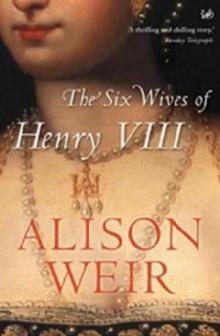 Six Wives of Henry VIII
Six Wives of Henry VIII Elizabeth of York: A Tudor Queen and Her World
Elizabeth of York: A Tudor Queen and Her World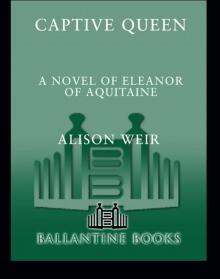 Captive Queen
Captive Queen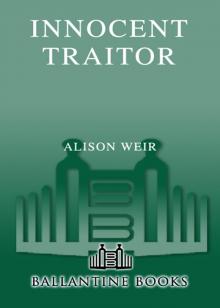 Innocent Traitor
Innocent Traitor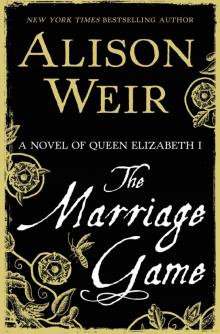 The Marriage Game
The Marriage Game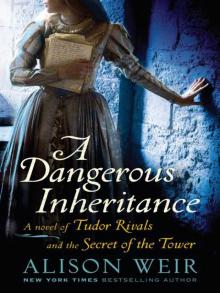 A Dangerous Inheritance
A Dangerous Inheritance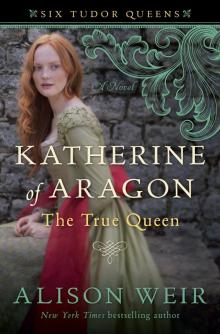 Katherine of Aragón: The True Queen
Katherine of Aragón: The True Queen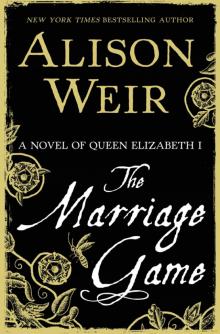 The Marriage Game: A Novel of Queen Elizabeth I
The Marriage Game: A Novel of Queen Elizabeth I Princes in the Tower
Princes in the Tower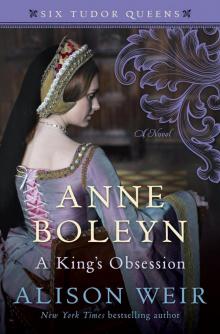 Anne Boleyn: A King's Obsession
Anne Boleyn: A King's Obsession Traitors of the Tower
Traitors of the Tower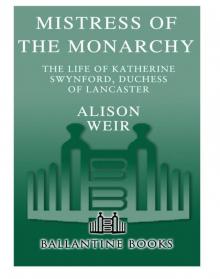 Mistress of the Monarchy: The Life of Katherine Swynford, Duchess of Lancaster
Mistress of the Monarchy: The Life of Katherine Swynford, Duchess of Lancaster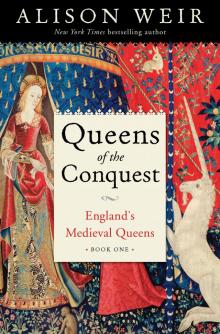 Queens of the Conquest: England’s Medieval Queens
Queens of the Conquest: England’s Medieval Queens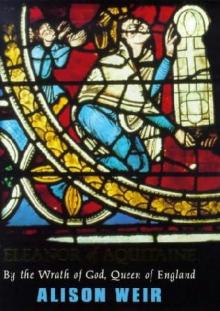 Eleanor of Aquitaine: A Life
Eleanor of Aquitaine: A Life Mary, Queen of Scots, and the Murder of Lord Darnley
Mary, Queen of Scots, and the Murder of Lord Darnley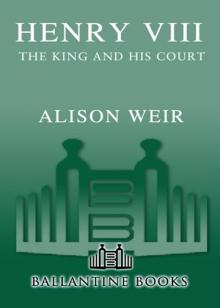 Henry VIII: The King and His Court
Henry VIII: The King and His Court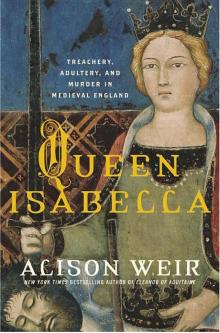 Queen Isabella: Treachery, Adultery, and Murder in Medieval England
Queen Isabella: Treachery, Adultery, and Murder in Medieval England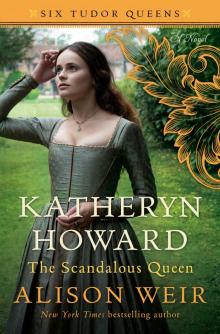 Katheryn Howard, the Scandalous Queen
Katheryn Howard, the Scandalous Queen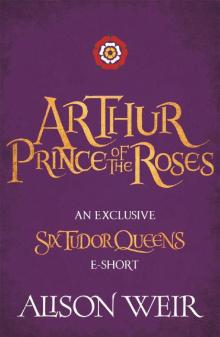 Arthur- Prince of the Roses
Arthur- Prince of the Roses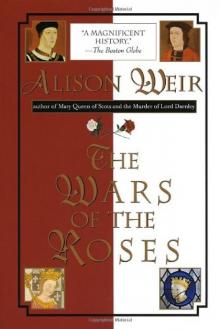 The Wars of the Roses
The Wars of the Roses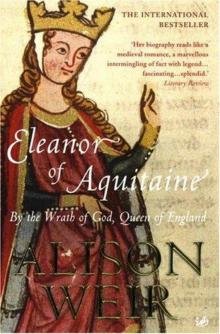 Eleanor of Aquitaine: By the Wrath of God, Queen of England
Eleanor of Aquitaine: By the Wrath of God, Queen of England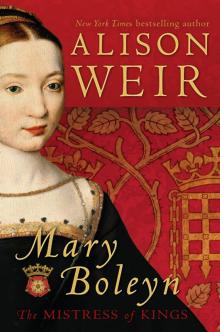 Mary Boleyn: The Great and Infamous Whore
Mary Boleyn: The Great and Infamous Whore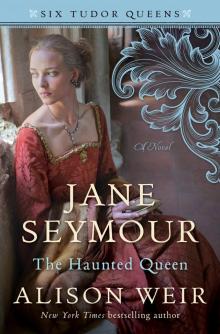 Jane Seymour: The Haunted Queen
Jane Seymour: The Haunted Queen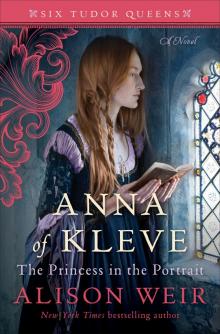 Anna of Kleve, the Princess in the Portrait
Anna of Kleve, the Princess in the Portrait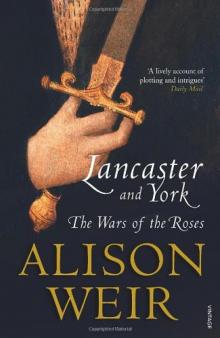 Lancaster and York: The Wars of the Roses
Lancaster and York: The Wars of the Roses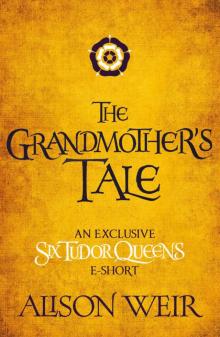 The Grandmother's Tale
The Grandmother's Tale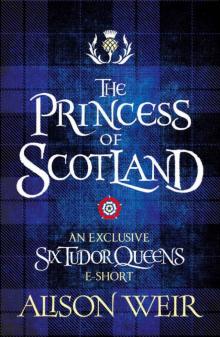 The Princess of Scotland (Six Tudor Queens #5.5)
The Princess of Scotland (Six Tudor Queens #5.5)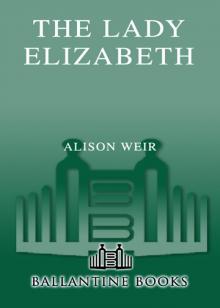 The Lady Elizabeth
The Lady Elizabeth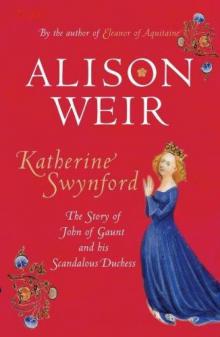 Katherine Swynford: The Story of John of Gaunt and His Scandalous Duchess
Katherine Swynford: The Story of John of Gaunt and His Scandalous Duchess The Curse of the Hungerfords
The Curse of the Hungerfords The Lost Tudor Princess: The Life of Lady Margaret Douglas
The Lost Tudor Princess: The Life of Lady Margaret Douglas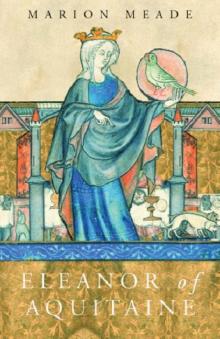 Eleanor of Aquitaine
Eleanor of Aquitaine Mistress of the Monarchy
Mistress of the Monarchy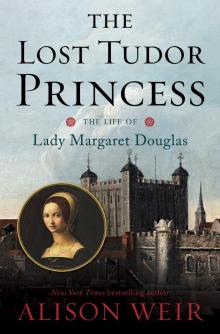 The Lost Tudor Princess
The Lost Tudor Princess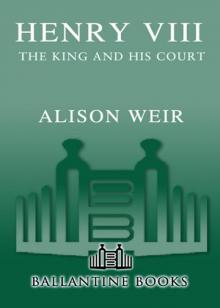 Henry VIII
Henry VIII Anne Boleyn, a King's Obsession
Anne Boleyn, a King's Obsession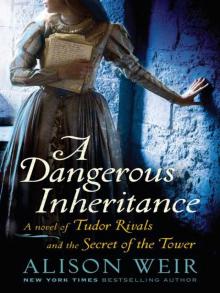 A Dangerous Inheritance: A Novel of Tudor Rivals and the Secret of the Tower
A Dangerous Inheritance: A Novel of Tudor Rivals and the Secret of the Tower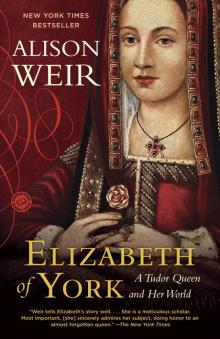 Elizabeth of York
Elizabeth of York Katherine of Aragon, the True Queen
Katherine of Aragon, the True Queen Katherine Swynford
Katherine Swynford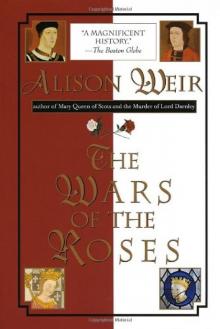 Wars of the Roses
Wars of the Roses Queens of the Conquest
Queens of the Conquest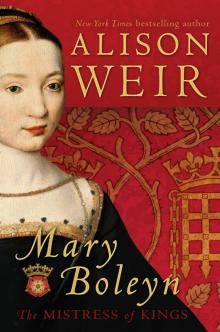 Mary Boleyn
Mary Boleyn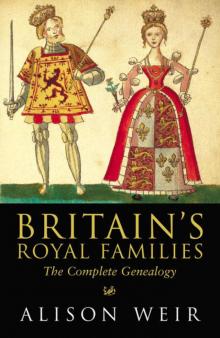 Britain's Royal Families
Britain's Royal Families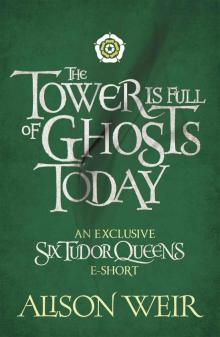 The Tower Is Full of Ghosts Today
The Tower Is Full of Ghosts Today Life of Elizabeth I
Life of Elizabeth I Anne Boleyn A King's Obssession
Anne Boleyn A King's Obssession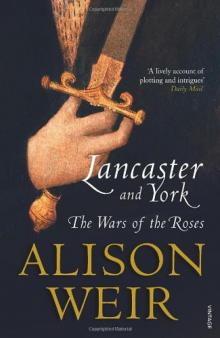 Lancaster and York
Lancaster and York Jane Seymour, the Haunted Queen
Jane Seymour, the Haunted Queen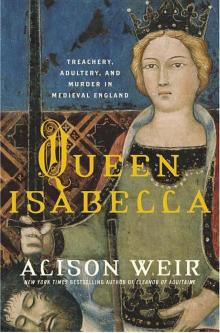 Queen Isabella
Queen Isabella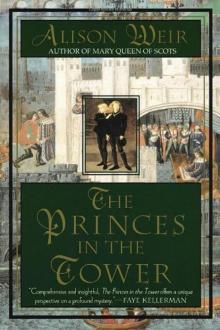 The princes in the tower
The princes in the tower